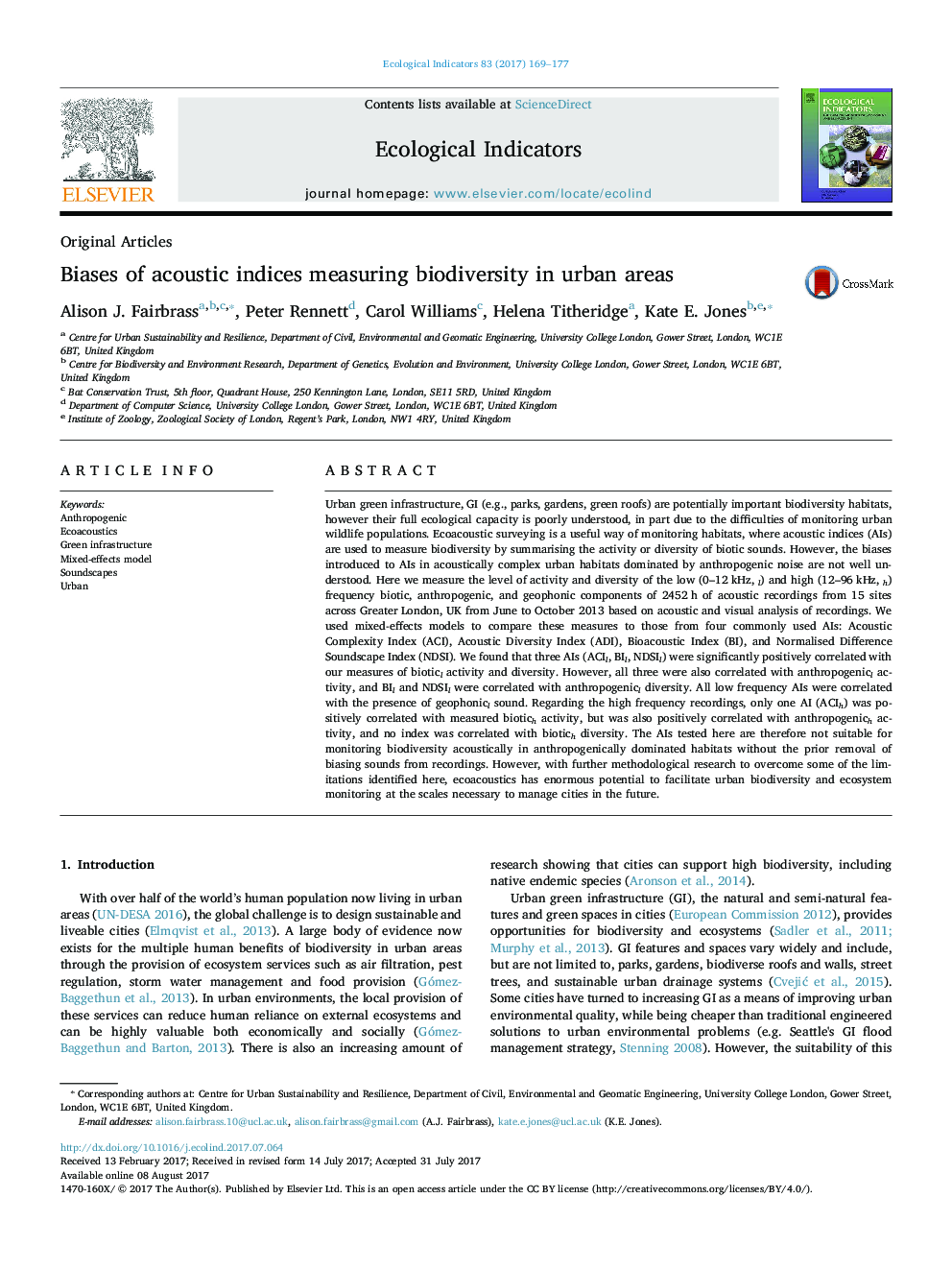| Article ID | Journal | Published Year | Pages | File Type |
|---|---|---|---|---|
| 5741488 | Ecological Indicators | 2017 | 9 Pages |
â¢The performance of acoustic indices (AI) in the urban environment is assessed.â¢The ADI did not positively correlate with biotic acoustic activity or diversity.â¢All AIs were biased by common non-biotic sounds in the urban environment.â¢Biasing sounds must be removed before using AIs on urban audio data.
Urban green infrastructure, GI (e.g., parks, gardens, green roofs) are potentially important biodiversity habitats, however their full ecological capacity is poorly understood, in part due to the difficulties of monitoring urban wildlife populations. Ecoacoustic surveying is a useful way of monitoring habitats, where acoustic indices (AIs) are used to measure biodiversity by summarising the activity or diversity of biotic sounds. However, the biases introduced to AIs in acoustically complex urban habitats dominated by anthropogenic noise are not well understood. Here we measure the level of activity and diversity of the low (0-12Â kHz, l) and high (12-96Â kHz, h) frequency biotic, anthropogenic, and geophonic components of 2452Â h of acoustic recordings from 15 sites across Greater London, UK from June to October 2013 based on acoustic and visual analysis of recordings. We used mixed-effects models to compare these measures to those from four commonly used AIs: Acoustic Complexity Index (ACI), Acoustic Diversity Index (ADI), Bioacoustic Index (BI), and Normalised Difference Soundscape Index (NDSI). We found that three AIs (ACIl, BIl, NDSIl) were significantly positively correlated with our measures of bioticl activity and diversity. However, all three were also correlated with anthropogenicl activity, and BIl and NDSIl were correlated with anthropogenicl diversity. All low frequency AIs were correlated with the presence of geophonicl sound. Regarding the high frequency recordings, only one AI (ACIh) was positively correlated with measured biotich activity, but was also positively correlated with anthropogenich activity, and no index was correlated with biotich diversity. The AIs tested here are therefore not suitable for monitoring biodiversity acoustically in anthropogenically dominated habitats without the prior removal of biasing sounds from recordings. However, with further methodological research to overcome some of the limitations identified here, ecoacoustics has enormous potential to facilitate urban biodiversity and ecosystem monitoring at the scales necessary to manage cities in the future.
Graphical abstractDownload high-res image (213KB)Download full-size image
